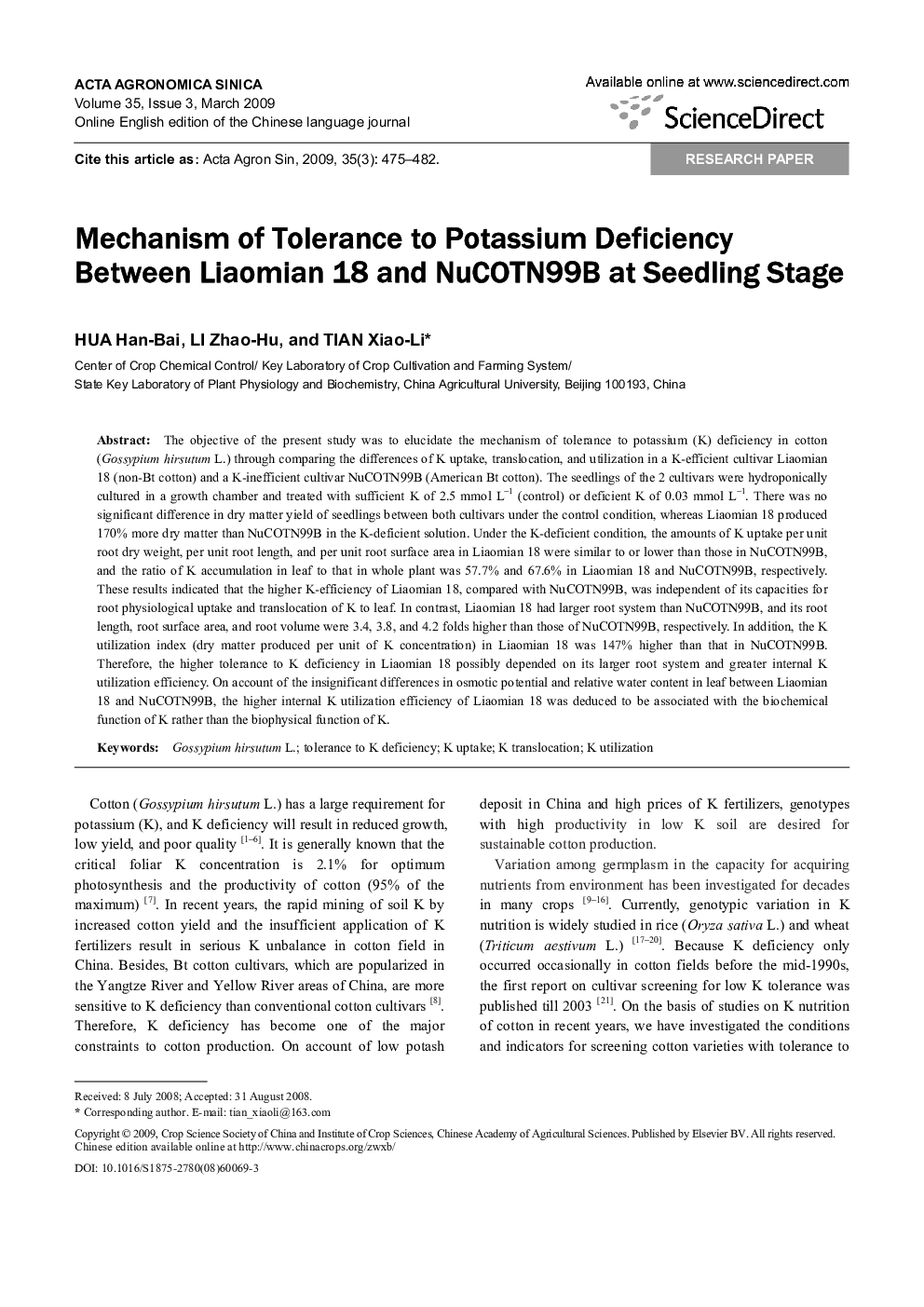| Article ID | Journal | Published Year | Pages | File Type |
|---|---|---|---|---|
| 4503416 | Acta Agronomica Sinica | 2009 | 8 Pages |
The objective of the present study was to elucidate the mechanism of tolerance to potassium (K) deficiency in cotton (Gossypium hirsutum L.) through comparing the differences of K uptake, translocation, and utilization in a K-efficient cultivar Liaomian 18 (non-Bt cotton) and a K-inefficient cultivar NuCOTN99B (American Bt cotton). The seedlings of the 2 cultivars were hydroponically cultured in a growth chamber and treated with sufficient K of 2.5 mmol L−1 (control) or deficient K of 0.03 mmol L−1. There was no significant difference in dry matter yield of seedlings between both cultivars under the control condition, whereas Liaomian 18 produced 170% more dry matter than NuCOTN99B in the K-deficient solution. Under the K-deficient condition, the amounts of K uptake per unit root dry weight, per unit root length, and per unit root surface area in Liaomian 18 were similar to or lower than those in NuCOTN99B, and the ratio of K accumulation in leaf to that in whole plant was 57.7% and 67.6% in Liaomian 18 and NuCOTN99B, respectively. These results indicated that the higher K-efficiency of Liaomian 18, compared with NuCOTN99B, was independent of its capacities for root physiological uptake and translocation of K to leaf. In contrast, Liaomian 18 had larger root system than NuCOTN99B, and its root length, root surface area, and root volume were 3.4, 3.8, and 4.2 folds higher than those of NuCOTN99B, respectively. In addition, the K utilization index (dry matter produced per unit of K concentration) in Liaomian 18 was 147% higher than that in NuCOTN99B. Therefore, the higher tolerance to K deficiency in Liaomian 18 possibly depended on its larger root system and greater internal K utilization efficiency. On account of the insignificant differences in osmotic potential and relative water content in leaf between Liaomian 18 and NuCOTN99B, the higher internal K utilization efficiency of Liaomian 18 was deduced to be associated with the biochemical function of K rather than the biophysical function of K.
